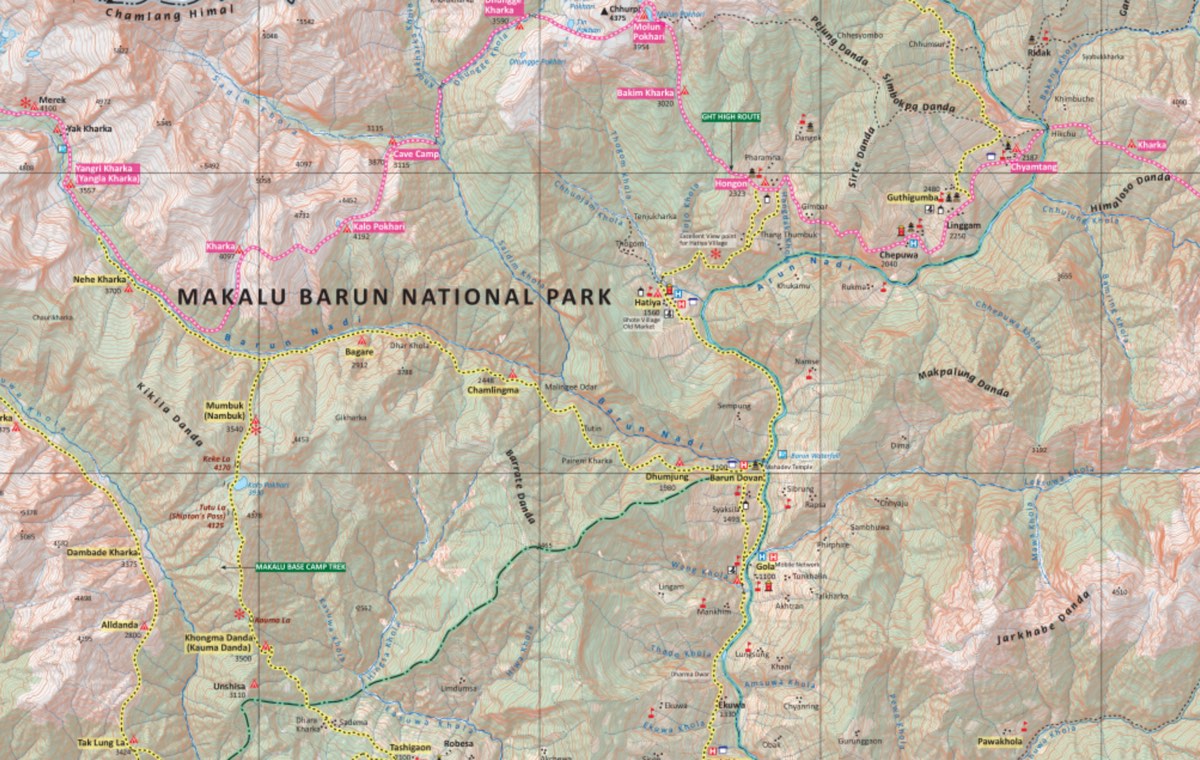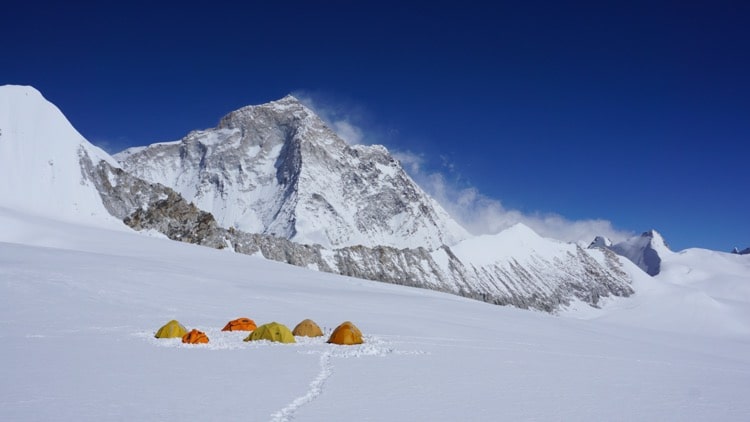Sherpani Col Pass Trek
Request a Quote (?)
- Satisfied Client
- Personalised Guide
- Instant Response
Get Instant Response:
+977-9851329446 (Whatsapp)
| Starts at: Tumlingtar | Ends at: Lukla |
| Trek Region: Makalu & Everest | Transport: Flight |
| Duration: 22 days | Trip Grade: Extreme |
| Max Altitude: 6050 m / 19849 ft | Accommodation: Camping |
The Sherpani Col Pass Trek includes three passes, two of them over 6,000m. It traverses the mountain range between Makalu and Everest. This trek combines cross-country trekking with mountaineering (fixed ropes and possible ice axe) to scale the high passes of the “Three Cols” – namely Sherpani Col, West Col, and Amphu Labsta. Today this trek forms part of the Great Himalayan Trail, a newly opened up trail that crosses the country from east to west through some of the toughest and most beautiful landscapes.
This being one of the most challenging sections of the Great Himalaya Trail, an excellent level of fitness is required to complete the long weeks of trekking, the majority of days at altitudes over 4,000 and up to 6,000m.
The latter section of the trek follows the route to Everest Base Camp, from where mountaineering expeditions set off to scale Everest. The trek also visits Gorakshep and Kala Patthar, the viewpoint for Everest, from where the views of the world’s tallest mountain are simply stunning! The Makalu Barun region is one of the largest protected areas in Nepal, home to 3,000 species of flowering plants, including a variety of Himalayan orchids, 440 species of birds, and 75 species of mammals. Rare species such as the snow leopard, musk deer, and Himalayan Thar live in this pristine environment. This is one of the reasons it has been included in the Sacred Himalayan Landscape initiative of the World Wildlife Fund (WWF).
And not forgetting the once-in-a-lifetime views of the immense mountain vistas of Makalu (8,481m), Everest (8,848m), and Lhotse (8,516m) – which are towering granite cliffs capped with amazing glaciers, and high altitude lakes. This is a journey for those who have the stamina and fitness level to tackle one of the most rewarding and challenging treks in Nepal. The final days of this amazing trip are spent in Namche Bazaar and Lukla – and that’s just the icing on the cake (Or the snow on the glacier!).
Sherpani Col Pass Trek Outline Itinerary
Day 1: Kathmandu To Tumlingtar (Flight) Drive to Chichila
Chichila – 1980 m / 6496 ft – 4 hrs
Day 2: Chichila To Num
Num – 1040 m / 3412 ft – 6 hrs
Day 3: Num to Seduwa
Seduwa – 1500 m / 4921 ft – 6 hrs
Day 4: Seduwa To Tashi Gaon
Tashi Gaon- 2100 m / 6889 ft – 5 hrs
Day 5: Tashi Gaon To Khongma Danda
Khongma Dada – 3500 m / 11482 ft – 7 hrs
Day 6: Acclimatization Day
Khongma Dada- 3500 m / 11482 ft – 2 hrs
Day 7: Khongma Danda To Dobato
Dobato – 3500 m / 11482 ft – 6 hrs
Day 8: Dobato To Yangla Kharka
Yangla Kharka – 3557 m / 11669 ft – 7 hrs
Day 9: Yangla Kharka To Langmale Kharka
Langmale Kharka – 4410 m / 14468 ft – 6 hrs
Day 10:Langmale Kharka To Makalu Base Camp
Makalu Base Camp – 4870 m / 15977 ft – 6 hrs
Day 11: Makalu Base Camp to Swiss Base Camp
Swiss Base Camp – 5150 m / 16896 – 6 hrs
Day 12: Acclimatization Day
Swiss Base Camp – 5150 m / 16896 ft – 3 hrs
Day 13: Swiss Base Camp to Sherpani Col Base Camp
Sherpani Col Base Camp – 5688 m – 18661 ft / 5 hrs
Day 14: Sherpani Col Base Camp to Baruntse Camp
Baruntse Camp – 6050 m / 19849 ft – 8 hrs
Day 15: Baruntse Camp to Honku Basin
Honku Basin – 5500 m / 18044 – 5 hrs
Day 16: Honku Basin to Amu Lapcha Base Camp
Amu Lapcha Base Camp – 5527 m / 18133 ft – 5 hrs
Day 17: Acclimatization Day
Amu Lapcha Base Camp – 5527 m / 18133 ft – 5 hrs
Day 18: Amu Lapcha Base Camp to Chukung
Chukung – 4730 m / 15518 ft – 9 hrs
Day 19: Chukung to Tengboche
Tengboche – 3960 m / 12992 ft – 6 hrs
Day 20: Tengboche to Monjo
Monjo – 2700 m / 8858 ft – 6 hrs
Day 21: Monjo to Lukla
Lukla – 2840 m / 9317 ft – 5 hrs
Day 22: Lukla to Kathmandu (Flight)
Kathmandu – 1300 m / 4265 ft – 40 min
Not satisfied with this Itinerary?
Are you interested on planning custom trip? It only takes 2 minutes.
Includes
- 21 nights accommodation in tents
- Kathmandu Tumlingtar, Lukla Kathmandu flight
- Tumlingtar Chichila local jeep
- Guide for 22 days
- Cook for 22 days
- Guide for 22 days
- Required number of porters for 22 days
- Makalu Barun national park entry permit
- Sagarmatha national park entry permit
- Trekkers information management system card
- 22 x set breakfast, 21 x set lunch and 21 x set dinner while on trek
- Accommodation and meals in Kathmandu
Sherpani Col Pass Trek Map

